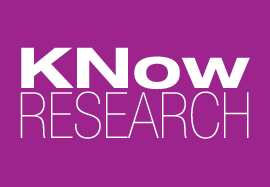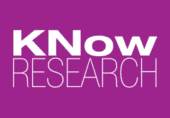Closing Representative and Accessibility Gaps in Market Research
At the Insights Association’s 2024 Annual Conference, there were a lot of (anticipated) conversations about AI technology and the future of research, but there were also many talks on the importance of inclusive insights in the present. These discussions shed light on how to improve current practices for better representation and accessibility within and for the future of the industry.
My experiences in community engagement led me to research. After working with formerly and currently incarcerated individuals to reduce recidivism and with local communities to understand the inaccessibility of transportation for communities of color, I realized the importance of listening to those most impacted and keeping them at the forefront of conversations or solutions. Uplifting the voices and experiences of those least represented continues to be what drives my work, which is why I attended IA Annual’s Inclusive Research track.
Key Takeaways: When thinking about gaps in research practices, there are 2 questions we as an industry must ask ourselves:
#1: Who are the audiences we’re failing to reach and why?
#2: What audiences do we reach but fail to fully understand or represent?
Two presentations offered answers to these questions: Maria Parra’s presentation on The Rising Influence of the U.S. Hispanic Population and the Imperative for Research and Verizon’s Insights for All presentation.
Maria Parra of Ingenium Research, lends her 25 years of research expertise in both the US and Latin America to offer insight into how to better represent Hispanic/Latiné populations as well as the importance of doing so. This is the fastest growing population in the US and is expected to be 25% of the US population by 2050. Maria’s presentation highlighted current barriers and how we can better optimize our current practices in recruiting Hispanic/Latiné populations.
How you can do your part:
- Acculturation Levels are an important yet often overlooked consideration when targeting and recruiting Hispanic participants. Understanding the degree to which one has assimilated to American culture and their primary or preferred language is vital in ensuring a representative and relevant sample.
-
- Un-acculturated or Low Acculturation (31% of US Hispanic Population)
- Bicultural or Moderate Acculturation (42% of US Hispanic Population)
- Acculturated or High Acculturation (27% of US Hispanic Population)
Kantar Monitor on Hispanics October 2023 – AIMM Understanding the Hispanic, Latin, Latinx People, History, and Culture 2021, U.S. Hispanic Chamber of Commerce (USHCC)
2. Technology Matters! Since the likelihood that this audience’s primary access to and use of the Internet is via smartphone is high, we must evaluate and ensure our practices and channels are accessible for mobile users. Whether that is increasing social media targeted recruitment ads, optimizing UI of surveys, or welcoming qualitative interviewees to dial in or use the Zoom mobile app, work with your team to improve your best practices.
-
- 97% of Latino households own smartphones
- 25% of Hispanics are “smartphone-only” Internet users vs. 12% of Non-Hispanic White
Kantar Monitor on Hispanics October 2023 – AIMM Understanding the Hispanic, Latin, Latinx People, History, and Culture 2021
Insights for All was led by Verizon’s Director of UX Research, Victoria Sosik and Principal UX Researcher, Claire Ferrari and covered how to better accommodate those with disabilities or neurodivergent individuals in research from screening to gathering insights. Not only are Victoria and Claire insights leaders at Verizon, but founders of the Accessibility Insights Consortium (AIC). Our President Katrina Noelle joined the AIC after hearing them present at TMRW to join other industry professionals dedicated to greater representation and accessibility in research. AIC’s session at IA Annual highlighted opportunities within current research practices as it relates to accessibility.
How you can do your part:
- Know POUR
- Perceivable – Information and user interface components must be presentable to users
- Operable – User interface components and navigation must be easy to use
- Understandable – Information and the operation of user interface must be clear
- Robust – Content can be interpreted reliably by a wide variety of user agents
Use this acronym when evaluating your practices and processes are to ensure they are accessible and inclusive to people with disabilities and neurodivergent participants.
Some great examples of what this may look like:
-
- Write out answers choices on scale questions versus having participants pick a number
- Add alt text for images to not only describe what’s in the picture but to provide context as well
- Ensure your processes are compatible/accessible on assistive technology
2. All Hands on Deck! From recruiters, suppliers, platform developers, to end clients, Insights for All need to be a collective effort. There has to be supply and demand for accessible research from all parts of the process for this initiative create meaningful impact. Consider your role in the process and improvements you can champion. Are you able to organize more accessible and inclusive panels? Can you request a project that encourages participation of underrepresented populations?
It’s our responsibility as individuals – and as members of our companies and communities – to be involved in ongoing initiatives for the advancement and future of our industry. We at KNow are excited to take these learnings and put them into practice to foster more representative, accessible and inclusive research practices and insights!

